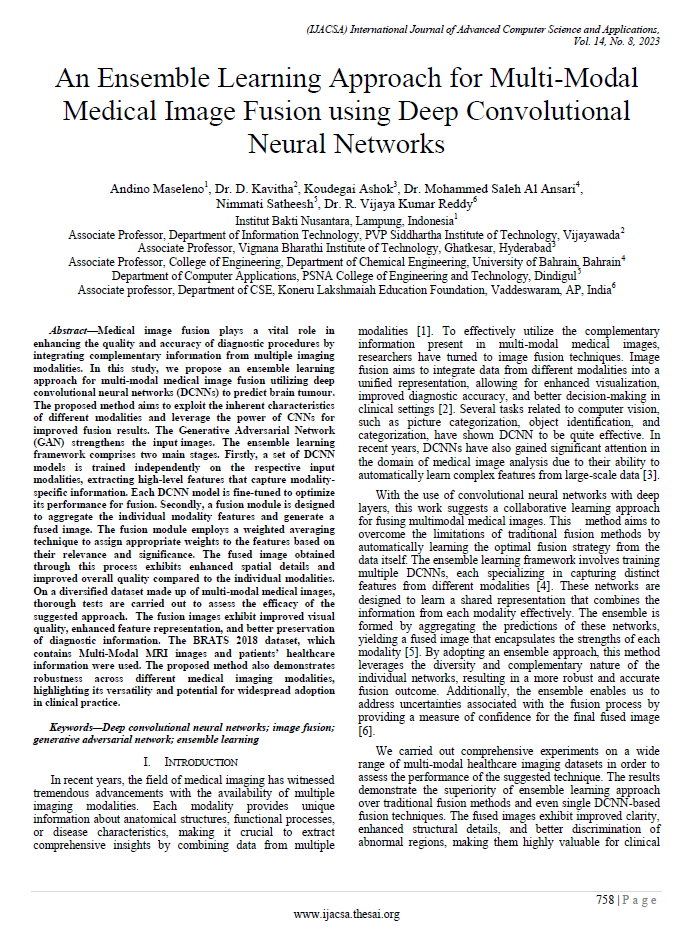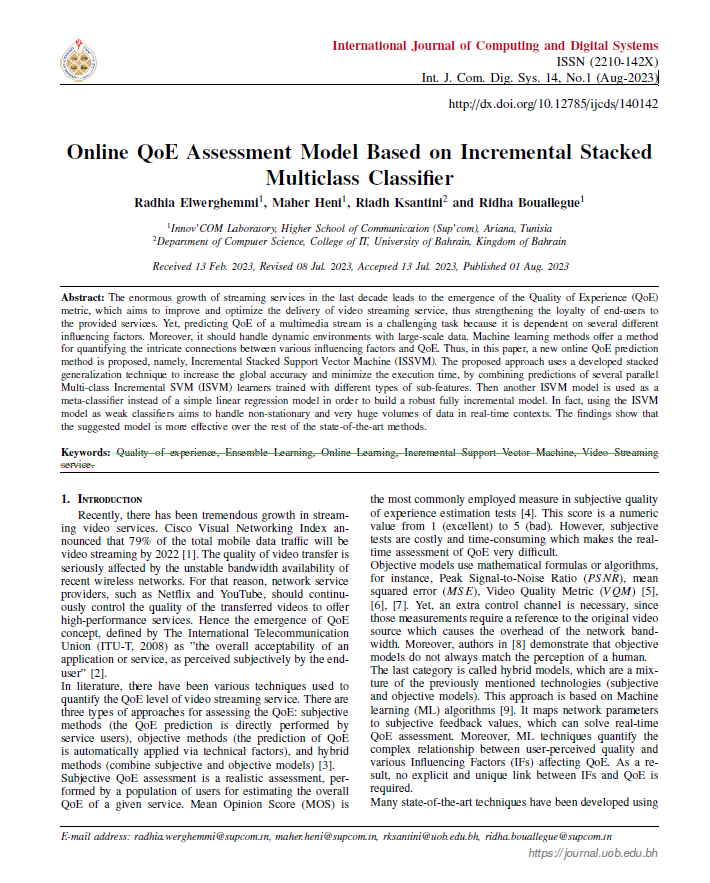Document
Using Generative Adversarial Networks and Ensemble Learning for Multi-Modal Medical Image Fusion to Improve the Diagnosis of Rare Neurological Disorders
Linked Agent
Rangaswamy, K , Author
Bharadwaja, Doradla , Author
Dupaty, Mani Mohan , Author
Sarkar, Partha , Author
Al Ansari, Mohammed Saleh, Author
Title of Periodical
International Journal of Advanced Computer Science and Applications
Issue published
Vol. 14, No. 11, 2023
Country of Publication
Bahrain
Place Published
Sakhir, Bahrain
Publisher
www.ijacsa.thesai.org
Date Issued
2023
Language
English
Subject
English Abstract
Abstract :
The research suggests a unique ensemble learning approach for precise feature extraction and feature fusion from multi-modal medical pictures, which may be applied to the diagnosis of uncommon neurological illnesses.
The proposed method makes use of the combined characteristics of Convolutional Neural Networks and Generative Adversarial Networks (CNN-GAN) to improve diagnostic accuracy and enable early identification.
In order to do this, a diverse dataset of multi-modal patient medical records with rare neurological disorders was gathered. The multi-modal pictures are
successfully combined using a GAN-based image-to-image translation technique to produce fake images that effectively gather crucial clinical data from different paradigms.
To extract features from extensive clinical imaging databases, the research employs trained models using transfer learning approaches with CNN frameworks designed specifically for analyzing medical images. By compiling unique traits from each modality, a thorough grasp of the core pathophysiology is produced.
By combining the strengths of several CNN algorithms using ensemble learning techniques including voting by majority, weight averaging, and layering, the forecasts were also integrated to arrive at the final diagnosis.
In addition, the ensemble approach enhances the robustness and reliability of the
assessment algorithm, resulting in increased effectiveness in identifying unusual neurological conditions.
The analysis of the collected data shows that the proposed technique outperforms
single-modal designs, demonstrating the importance of multi modal fusion of pictures and feature extraction.
The proposed method significantly outperforms existing methods, achieving an
accuracy of 99.99%, as opposed to 85.69% for XG Boost and 96.12% for LSTM.
The proposed method significantly outperforms existing methods, achieving an average increase in accuracy of approximately 13.3%. The proposed method was
implemented using Python software.
Member of
Identifier
https://digitalrepository.uob.edu.bh/id/921389a9-8fcd-453c-960b-21027c369001
Same Subject





